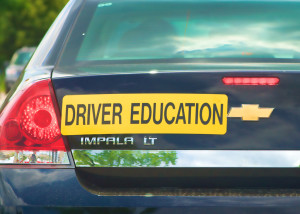 According to the CDC, there are more than 2500 teenagers killed on American roads each year. The kids between the ages of sixteen and nineteen years old injured in the same length of time can easily top a quarter of a million. For most, it is not surprising to learn that the people landing in this age group are more likely to suffer an accident while driving, but it might be shocking to know just how susceptible they are. It is estimated that a driver under the age of twenty is three times more likely to die behind the wheel than someone over the age of twenty.
According to the CDC, there are more than 2500 teenagers killed on American roads each year. The kids between the ages of sixteen and nineteen years old injured in the same length of time can easily top a quarter of a million. For most, it is not surprising to learn that the people landing in this age group are more likely to suffer an accident while driving, but it might be shocking to know just how susceptible they are. It is estimated that a driver under the age of twenty is three times more likely to die behind the wheel than someone over the age of twenty.
Suddenly, the importance of proper training for any teen driver becomes glaringly apparent. Parents are the examples for their children in all ways. This is especially true when it comes to developing driving habits. For that reason, it is essential that moms and dads take on the task of teaching their teens, in addition to a driver’s education course. This time, with you seated at their side, is the very best experience that a teen driver can hope for. It provides them an extra set of eyes, a certain level of added comfort, and the ability to make minor mistakes without fear of judgment.
In addition to the obvious advantage of additional practice, many states now require teens to have a certain number of hours behind the wheel before they can earn a license. This requirement often far exceeds the time racked up in a driver’s education course. So, as you prepare to help your teenager, keep these tips in mind:
- Not Every Sixteen Year Old Is Ready. Just because a birthday has come and gone doesn’t mean that it is time to start driving. If your child shows little interest or is overly timid, allow him or her more time to mature.
- Make a Plan and Stick to It. As the driving instructor, it is important to have a lesson plan in place. Know where you plan to take your teen and what skills you intend to work on during the specified time.
- Keep Your Temper in Check. As a St. Petersburg personal injury attorney, I can tell you that anger is dangerous on the road. Your child will mimic your reactions, so don’t show rage at the new driver or others on the road. Keep your cool and give tips, ask questions, and understand that this is a learning process. It is not something that is going to be mastered overnight.
- Start at the Beginning and Work Forward. It’s an obvious statement, but it is amazing to see the number of parents that immediately toss the keys to new drivers.
- The Basics There is a lot to learn, starting with the simplest things like how to operate the controls in the car, including the windshield wipers, turning signals, and even how to adjust the mirrors before you leave your Saint Petersburg driveway.
- Turning the Key From there, empty parking lots make a great place to practice stops, starts, turns, and so on. This can help ease nervous drivers into driving and it also removes many of the potential risks.
- From Town to City to Highway Work up to the busier roads, beginning on roads with low speed limits and light traffic.
- Speak Calmly and Give Notice. When giving directions to a new driver, recall that he or she is likely very nervous. The high stress levels can lead to mistakes. Attempt to calm your child by talking softly and explaining things with patience. Another great tip is to provide plenty of warning before a turn or lane change.
Always remember, that you aren’t just a teacher, you are a role model. Do as you preach when it comes to driving and you will find that your child becomes a very responsible and trustworthy driver. It may safe his or her life in the long run.
